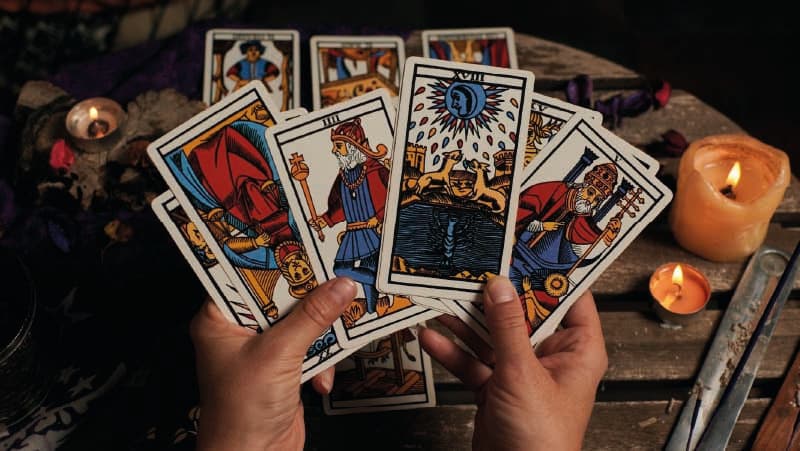
How to Read Tarot? The Language of Cards
How to Read Tarot? The Language of Cards
Tarot is a mystical system of 78 cards that has been used since the 15th century. It's not just a fortune-telling tool, but a powerful way to dialogue with your subconscious and access inner guidance.
Structure of the Tarot Deck
A tarot deck consists of two main parts:
1. Major Arcana - 22 Cards
Major Arcana cards represent life's major turning points and the journey of spiritual development:
- 0 - The Fool: New beginnings, innocence
- 1 - The Magician: Power, will, manifestation
- 2 - The High Priestess: Intuition, mystery, subconscious
- 3 - The Empress: Abundance, mother, creativity
- 4 - The Emperor: Authority, structure, father
- 5 - The Hierophant: Tradition, spiritual guidance
- 6 - The Lovers: Love, choices, values
- 7 - The Chariot: Will, victory, control
- 8 - Strength: Courage, patience, inner strength
- 9 - The Hermit: Inner search, solitude, wisdom
- 10 - Wheel of Fortune: Change, destiny, cycles
- 11 - Justice: Balance, cause-effect, truth
- 12 - The Hanged Man: Surrender, sacrifice
- 13 - Death: Transformation, ending, new beginning
- 14 - Temperance: Harmony, patience, moderation
- 15 - The Devil: Addiction, materialism, captivity
- 16 - The Tower: Destruction, sudden change, enlightenment
- 17 - The Star: Hope, inspiration, healing
- 18 - The Moon: Illusion, fear, subconscious
- 19 - The Sun: Success, happiness, light
- 20 - Judgement: Rebirth, reckoning
- 21 - The World: Completion, success, wholeness
2. Minor Arcana - 56 Cards
Minor Arcana represents everyday life events and is divided into 4 suits:
Swords - Air: Mind, thought, conflict, truth Cups - Water: Emotions, relationships, intuition, love Wands - Fire: Action, passion, creativity, energy Pentacles - Earth: Matter, money, work, physical world
Each suit includes:
- Number cards 1-10: Experiences and situations
- 4 court cards: Page, Knight, Queen, King
Tarot Reading Steps
1. Preparation
- Create a calm environment
- Set your intention
- Cleanse the deck (incense, moonlight, etc.)
- Shuffle the cards and transfer your energy
2. Asking Questions
A good tarot question:
- ❌ "Will I get married?" → ✅ "What should I focus on to grow in my relationship?"
- ❌ "Will I be rich?" → ✅ "What path should I follow for financial abundance?"
- ❌ "Yes/no" questions → ✅ Open-ended, exploratory questions
3. Card Selection and Spread
Single Card Reading: Daily guidance 3-Card Spread: Past-Present-Future or Situation-Action-Outcome Celtic Cross (10 Cards): Detailed situation analysis
4. Interpretation
When interpreting each card:
- The card's traditional meaning
- The card's symbols and colors
- Your intuitions (what is the card telling you?)
- Its connection to your question
- Its relationship with other cards
Reversed Cards
When a card appears reversed:
- The energy is blocked
- The meaning is weakened or excessive
- An internal message (not external)
- Resistance or denial
Tarot Ethics
🔮 Take responsibility - Tarot guides, the decision is yours 🔮 Get permission when reading for others 🔮 Don't spread fear - The Death card doesn't mean literal death! 🔮 Recommend professional help for health/legal issues 🔮 Know your limits - You can't see everything
Living with Tarot
Tarot can become a life practice:
- Daily card drawing ritual
- Working with moon cycles (full moon/new moon readings)
- Using as a meditation tool
- Getting life guidance
Conclusion
Tarot is more of a self-awareness system than a fortune-telling tool. The cards illuminate truths you already know but ignore, allowing you to access your inner wisdom.
With AstreamInd, you can do free tarot readings and step into the symbolic world of cards. What messages await you?